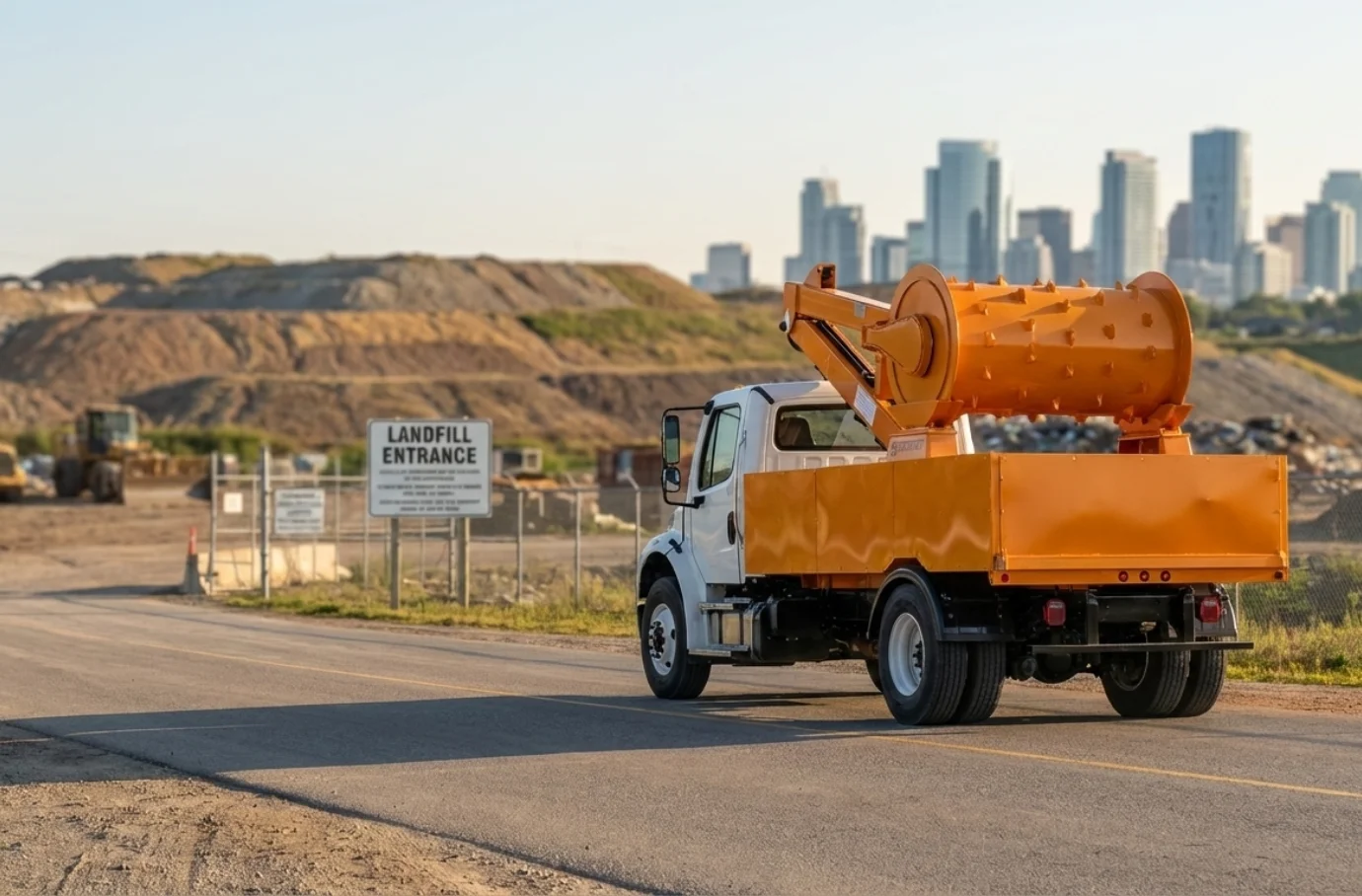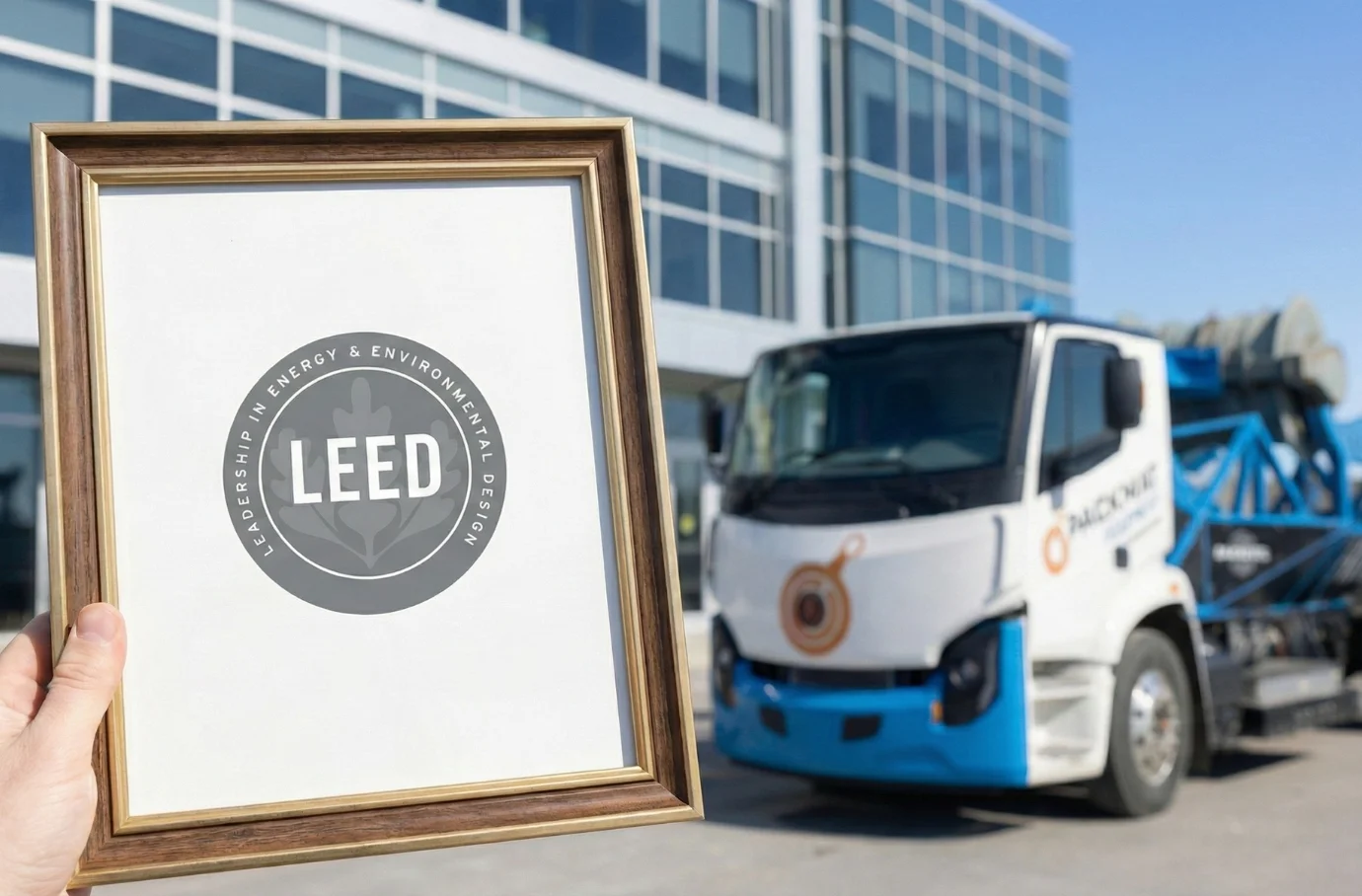Introduction
In the fast-paced world of construction, efficient waste management is not just a matter of regulatory compliance but a cornerstone of sustainable development and cost-effective project management. The construction industry, known for its significant contribution to solid waste generation worldwide, faces increasing pressure to adopt practices that minimize environmental impact while maximizing resource efficiency. Efficient waste management in construction is crucial for several reasons: it helps conserve valuable landfill space, reduces pollution and greenhouse gas emissions, and can lead to substantial cost savings. Moreover, adhering to stringent environmental regulations and achieving sustainability goals are pivotal in maintaining a construction company's reputation and operational license. This article delves into the intricacies of construction waste, exploring its types, impacts, and the best practices for its efficient management.
Understanding Construction Waste
Types of Construction Waste
Construction sites are prolific producers of waste, generating a wide array of materials that need to be managed with care. These include:
Concrete: Often left over from demolition or construction projects, concrete waste can be crushed and recycled.
Wood: Used in framing and other structural elements, wood waste can be repurposed or recycled if untreated.
Metals: Steel, aluminum, and copper are common in construction sites, valuable for recycling.
Hazardous Waste: Paints, solvents, and other chemicals require special handling and disposal procedures to prevent environmental contamination.
Packaging Materials: Cardboard, plastic wrappings, and other packaging materials can accumulate significantly on construction sites.
These materials, if not managed properly, contribute to the growing problem of waste in the construction industry, necessitating efficient waste management practices.
The Impact of Construction Waste
The environmental impact of construction waste is significant, affecting land, air, and water quality. Unmanaged waste contributes to the depletion of landfill space, a growing concern as available sites become scarce. Moreover, certain types of construction waste can release harmful substances into the environment, leading to soil and water pollution and adversely affecting wildlife and human health. Construction waste also embodies the energy and resources expended in producing materials, and when these materials are wasted, the embedded energy is lost, contributing to unnecessary greenhouse gas emissions. Recognizing these impacts is the first step towards implementing more sustainable waste management practices on construction sites, aiming to minimize the environmental footprint of construction activities.
Planning and Implementing Waste Management Strategies
Waste Management Planning
Effective waste management begins long before construction starts; it's an integral part of the project planning process. Incorporating waste management strategies from the outset not only ensures compliance with regulations but also significantly enhances overall project efficiency and sustainability. Conducting a thorough waste audit is a crucial first step in this planning phase. By understanding the types of waste the construction project will generate, along with their estimated volumes, project managers can devise more accurate and effective waste management plans. These plans should outline how waste will be minimized, handled, recycled, or disposed of throughout the construction process. Additionally, they can help in identifying opportunities for cost savings, such as through the reuse of materials or by selecting products with minimal packaging.
Waste Minimization Techniques
Minimizing waste at the source is among the most effective strategies for efficient construction waste management. This can be achieved through careful planning and precise materials ordering to avoid excess. Implementing just-in-time (JIT) delivery systems can further reduce the risk of material overordering and waste. Proper storage and handling techniques are also crucial; they prevent damage and spoilage of materials, thus reducing waste. Training staff and subcontractors on the importance of waste reduction and efficient material handling can foster a culture of sustainability on the construction site, leading to significant reductions in waste generation.
Reuse and Recycling Opportunities
Reusing materials directly on the construction site presents a practical approach to waste management. For example, excavated soil can be used for landscaping, and demolished concrete can be crushed and reused as aggregate or fill material. Such practices not only reduce waste but also lower project costs by reducing the need for new materials and waste disposal.
Segregating waste is essential for effective recycling; it ensures that recyclable materials are not contaminated with non-recyclable waste. Setting up separate bins for different types of waste, such as wood, metal, and plastic, can greatly facilitate this process. Engaging local recycling facilities early in the project planning phase can help identify the materials that can be recycled and the requirements for doing so. Recycling not only has environmental benefits, such as conserving natural resources and reducing greenhouse gas emissions, but it can also offer financial advantages. Selling scrap materials or avoiding landfill fees through recycling can contribute to the overall economic efficiency of the project.
Incorporating these strategies into the project's waste management plan can lead to more sustainable, cost-effective, and compliant construction practices. By planning ahead, minimizing waste, and maximizing reuse and recycling, construction projects can significantly reduce their environmental impact while also potentially reducing costs.
Packmat as a solution
Packmat's product line is specifically engineered to address the critical challenges in waste management and recycling, focusing on maximizing efficiency and minimizing environmental impact. Their solutions are crafted for a variety of sectors, including construction, where managing construction debris efficiently is vital. By reducing the volume of waste through compaction, Packmat helps in cutting down the frequency of pickups, which not only saves on transportation and disposal costs but also contributes to reducing the carbon footprint associated with waste management.
The efficiency of Packmat's equipment lies in its ability to handle different types of waste materials, from construction debris to recyclable materials, making it a versatile choice for businesses seeking to enhance their waste management practices. Furthermore, Packmat's commitment to innovation is evident in their continuous efforts to improve their products, incorporating the latest technologies to ensure that they offer the most efficient and environmentally friendly waste management solutions available.
In summary, Packmat stands out as a key player in the waste management industry, offering a range of compactors and balers that are not only effective in reducing waste volume but also in promoting recycling and sustainability. Their dedication to providing solutions that are both innovative and tailored to the specific needs of their clients makes them a valuable partner for businesses looking to improve their waste management practices and contribute to a more sustainable future.
Conclusion
Throughout this article, we've explored the multifaceted approach required for efficient waste management on construction sites, emphasizing the critical nature of this issue in the context of environmental sustainability, economic efficiency, and regulatory adherence. Starting with an understanding of the types of waste generated during construction projects and their significant environmental impacts, we've seen how proper waste management is not just a regulatory requirement but a necessity for protecting our planet and conserving its resources.
The strategic planning and implementation of waste management from the project's inception are paramount. By conducting waste audits, construction projects can tailor their waste management strategies to minimize waste generation through precise material ordering, proper storage, and handling practices. Furthermore, we delved into the crucial roles of waste minimization techniques, alongside reuse and recycling opportunities, in not only reducing the environmental footprint of construction activities but also in unlocking potential cost savings and contributing to the circular economy.
Packmat, as a theoretical solution within this framework, would offer innovative and effective tools designed to compact and manage waste efficiently, although specifics about its products and services were not discussed in detail. Implementing such solutions on construction sites can further enhance waste management outcomes, aligning with the broader goals of sustainable development.
In conclusion, adopting efficient waste management practices is imperative for the construction industry. It goes beyond mere compliance with regulations; it's about stepping up as responsible stewards of the environment. By embracing these practices, the construction industry can significantly reduce its impact on the environment, save costs through smarter resource utilization, and contribute to a more sustainable future. The call to action is clear: it's time for the construction sector to prioritize and implement efficient waste management practices, ensuring a greener, more sustainable path forward.
Easy steps to create a color palette
Lorem ipsum dolor sit amet, consectetur adipiscing elit lobortis arcu enim urna adipiscing praesent velit viverra sit semper lorem eu cursus vel hendrerit elementum morbi curabitur etiam nibh justo, lorem aliquet donec sed sit mi dignissim at ante massa mattis.
- Neque sodales ut etiam sit amet nisl purus non tellus orci ac auctor
- Adipiscing elit ut aliquam purus sit amet viverra suspendisse potent
- Mauris commodo quis imperdiet massa tincidunt nunc pulvinar
- Excepteur sint occaecat cupidatat non proident sunt in culpa qui officia
What is a color palette?
Vitae congue eu consequat ac felis placerat vestibulum lectus mauris ultrices cursus sit amet dictum sit amet justo donec enim diam porttitor lacus luctus accumsan tortor posuere praesent tristique magna sit amet purus gravida quis blandit turpis.
Don’t overspend on growth marketing without good retention rates
At risus viverra adipiscing at in tellus integer feugiat nisl pretium fusce id velit ut tortor sagittis orci a scelerisque purus semper eget at lectus urna duis convallis porta nibh venenatis cras sed felis eget neque laoreet suspendisse interdum consectetur libero id faucibus nisl donec pretium vulputate sapien nec sagittis aliquam nunc lobortis mattis aliquam faucibus purus in.
- Neque sodales ut etiam sit amet nisl purus non tellus orci ac auctor
- Adipiscing elit ut aliquam purus sit amet viverra suspendisse potenti
- Mauris commodo quis imperdiet massa tincidunt nunc pulvinar
- Adipiscing elit ut aliquam purus sit amet viverra suspendisse potenti
What’s the ideal customer retention rate?
Nisi quis eleifend quam adipiscing vitae aliquet bibendum enim facilisis gravida neque euismod in pellentesque massa placerat volutpat lacus laoreet non curabitur gravida odio aenean sed adipiscing diam donec adipiscing tristique risus amet est placerat in egestas erat.
“Lorem ipsum dolor sit amet consectetur adipiscing elit, sed do eiusmod tempor incididunt ut labore et dolore magna aliqua enim ad minim veniam.”
Next steps to increase your customer retention
Eget lorem dolor sed viverra ipsum nunc aliquet bibendum felis donec et odio pellentesque diam volutpat commodo sed egestas aliquam sem fringilla ut morbi tincidunt augue interdum velit euismod eu tincidunt tortor aliquam nulla facilisi aenean sed adipiscing diam donec adipiscing ut lectus arcu bibendum at varius vel pharetra nibh venenatis cras sed felis eget.





.webp)